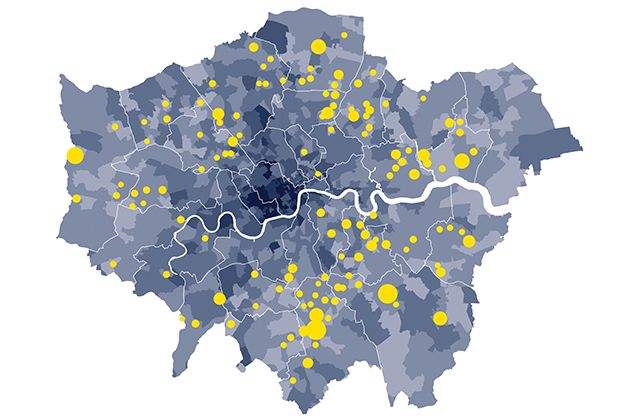Where in London can regeneration led by retail and leisure uses improve residential value?
Do residents choose to buy in an area because of the retail and leisure offering? Or do retail and leisure occupiers follow the residents? It may sound like the classic chicken and egg situation, but we know there is a strong positive correlation between quality of retail and leisure, and residential value. This uplift increases substantially when the retail quality is high and travel time is short (see below).
.jpg)
Value uplift The combination of good retail/leisure and short travel time correlates to higher residential value
Source: Savills Research, HM Land Registry, Mapumental, Geolytix, Experian, FSA
While a retailer’s decision on where to open next is often driven by who lives in an area, the opposite applies for mixed-use development. Here, retail and leisure provision can be a crucial first act by developers, enabling them to create the sense of place that attracts residents and drives desirability.
So, given the opportunity that high- quality retail and leisure presents in driving residential values as part of wider mixed-use schemes, the question for developers is: where in London can the retail and leisure offering be improved as part of a wider regeneration effort?
By assessing key drivers, such as access to green space, travel time and quality of retail, we can model how residential values vary across London (see below for methodology). Using this value model, we identified areas which are both undervalued (meaning they are lower value than you would expect them to be given their quality of place and connectivity) and have a low quality of retail and leisure. These areas represent opportunities to unlock hidden value through regeneration.
The map shows the potential residential uplift through the improvement of retail and leisure offering as part of a regeneration effort in different parts of London. The yellow areas already have a high quality of retail and leisure and there is limited potential to generate residential value uplift through improvement of the offering. The darker the area, however, the greater the potential there is for a comprehensive regeneration including high-quality retail and leisure to unlock value.
.jpg)
Unlocking hidden value Potential to generate residential value uplift (%) across London through the improvement of retail and leisure offering
Source: Savills Research, HM Land Registry, Mapumental, CDRC, VOA, OCSI, ONS, Geolytix, Experian, FSA
In central London, where there is already a value premium and the retail offering is already excellent, there is limited scope for improvement. In areas such as in Lambeth, Newham and Ealing, which are already well-connected, there is an opportunity to unlock residential value growth specifically through the placemaking benefits of retail and leisure provision as part of mixed-use developments and wider regeneration initiatives.
Identifying hidden value: Methodology
We have created a model of value for London that considers a range of factors that affect residential values. These include: travel time into employment hubs, access to green space, proximity to education, quality of place, night economy offering, quality of retail and leisure, and more. Using this model, we can ask ‘what is holding back a location from being higher value?’ We can also provide insight on what can be done to remove these barriers.
In this case, we scored the retail and leisure offering in each area (MSOA) based on its position relative to the rest of London. We considered both the quality and quantity of multiple retail brands, independent stores, cafes and restaurants, entertainment and leisure operators. In addition, we analysed occupancy levels and proximity to other retail areas. The potential for value uplift is calculated by improving the quality of retail and leisure offering for each travel time band to the 90th percentile score (11).
NB: this map accounts for improved travel times created by the Elizabeth line.
Read the other articles within this publication below
.jpg)


